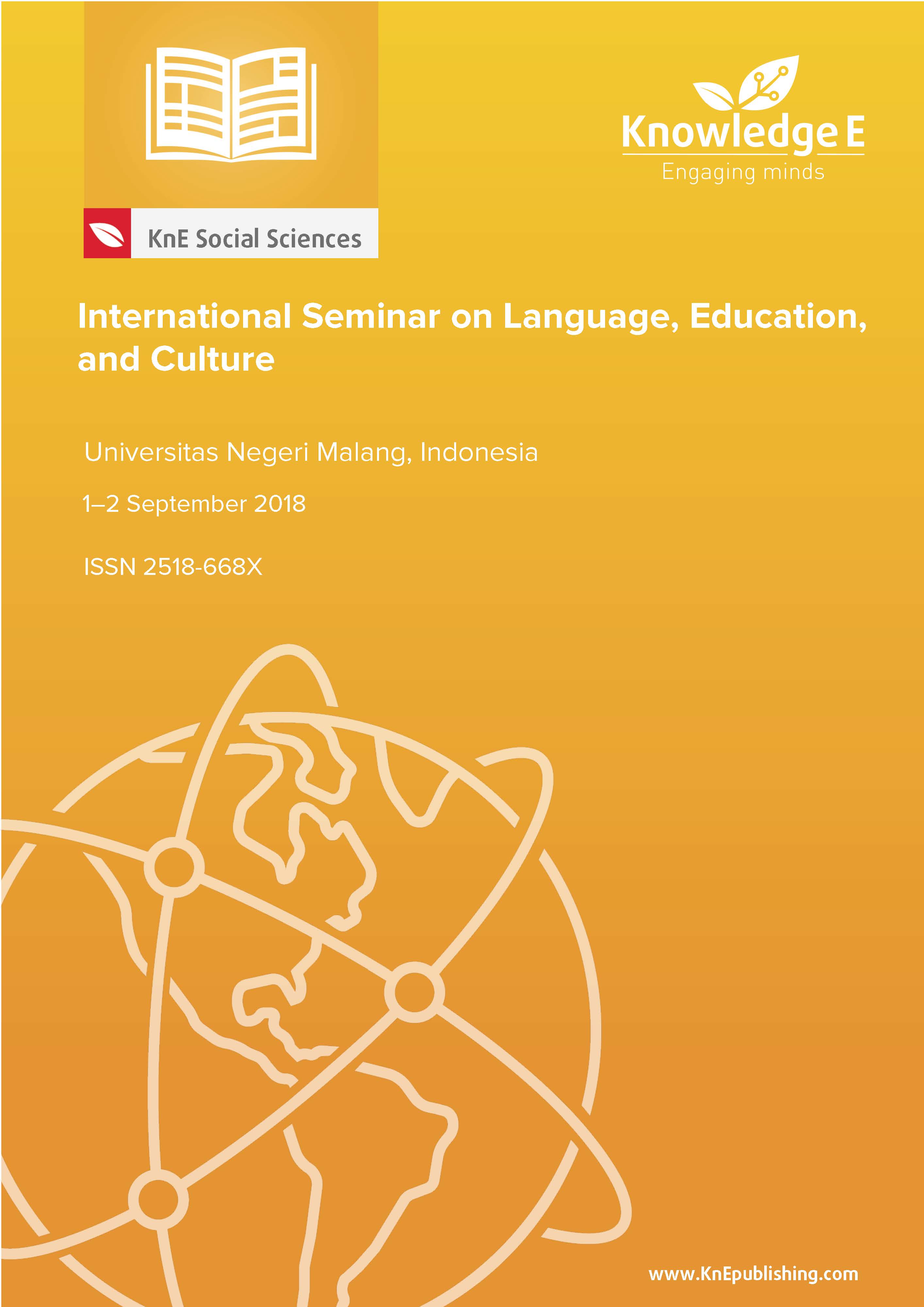Students’ Discourse Strategies in a Classroom Debate Performance
DOI:
https://doi.org/10.18502/kss.v3i10.3934Abstract
Conducting a debate as one activity in a speaking class might provide opportunities for students to practice their exploratory talk as the benefits of performing this activity include developing an objectivity toward controversial questions and the ability to reason logically. In order to achieve its goals, students need to own communicative competences, which are categorized into grammatical competence, discourse competence, sociolinguistic competence and strategic competence. This study concerns with the students’ use of discourse strategies as this shows their ability in connecting sentences or utterances to produce meaningful units of utterances. In addition, this strategy is required to deliver thought and comprehend ideas as it would require complete thought happening before and after the utterances to gain meaningful representation of the message. Therefore, the focus of this study is to find out types of discourse strategies the students employ during their debate performance in Speaking for Academic Purposes subject offered at the Department of English in a state university at East Java.
Keywords: communicative competence, discourse strategies, debate
References
Aman, I., Awal, N. M., & Jaafar, M. F. (2014). Discourse strategies of science and technology academic texts: A Malay language account. Procedia – Social and Behavioral Sciences, 136, pp. 344 – 349.
Baker, P. (2006). Using Corpora in Discourse Analysis. London/New York: Continuum.
Besedina, Y.I., Dudkina, A.I., & Kopylovskaya, M.Y. (2017). Learning discourse strategies for international relations. Методички видици 8, 355 – 372, doi:10.19090/mv.2017.8.355-372
Brown, H. D. (2007). Principles of language learning and teaching: Fifth edition. New York: Pearson Education, Inc.
Canale, M. (1983). From communicative competence to communicative language pedagogy. In J. Richards & R. Schmidt (Eds.). Language and communication (pp. 2 – 27). London: Longman Group, Ltd.
Cegala, D.J. & Villaume, W.A. 1988. Interaction involvement and discourse strategies: The patterned use of cohesive devises in conversation. Communication Monographs, 55(1):2240.
Conrad, S. (2002). Corpus linguistic approaches for discourse analysis. Annual Review of Applied Linguistics, 22, pp.75- 95.
Dalton-Puffer, C. 2009. Explaining: a central discourse function in instruction. In III Colloquium on Semi-Immersion in Catalonia: International Roundtable on CLIL programme 28th and 29
Gumperz, J.J. (1982). Discourse strategies. Cambridge: Cambridge University Press.
Keller, E. 1981. Gambits: Conversational strategy signals. In F. Coulmas (ed.). Conversational Routine. The Hague: Mouton.
Michaels, S. & Cook-Gumperz, J. 1979. A study of sharing time with first grade students: Discourse narratives in the classroom. Proceedings of the Fifth Annual Meeting of the Berkeley Linguistics Society, pp. 647 – 660.
Micheau, C. & Billmyer, K. 1987. Discourse strategies for foreign business studies: Preliminary research findings. English for Specific Purposes, 6 (2), pp. 87 – 97.
Miles, M.B., & Huberman, A. M. (1994). Qualitative data analysis: An expanded sourcebook. Thousand Oaks, CA: Sage Publications.
O’Connor, M.C., & Michaels, S. 1993. Aligning academic task and participation status through revoicing: Analysis of a classroom discourse strategy. Anthropology and Education Quarterly, 24 (4), pp. 318 – 335.
Skovholt, K. 2016. Establishing scientific discourse in classroom interaction teacher students’ orientation to mundane versus technical talk in the school subject Norwegian. Scandinavian Journal of Educational Research, doi: http://dx.doi.org/10. 1080/00313831.2016.1212263.
Tarone, E. 1979. Interlanguage as chameleon. Language Learning, 29(1):181-191.
Van der Stuyf, R. (2002). Scaffolding as a teaching strategy. (Online http:// workplacesafety.pbworks.com/f/Scaffold%20Learning.doc)

